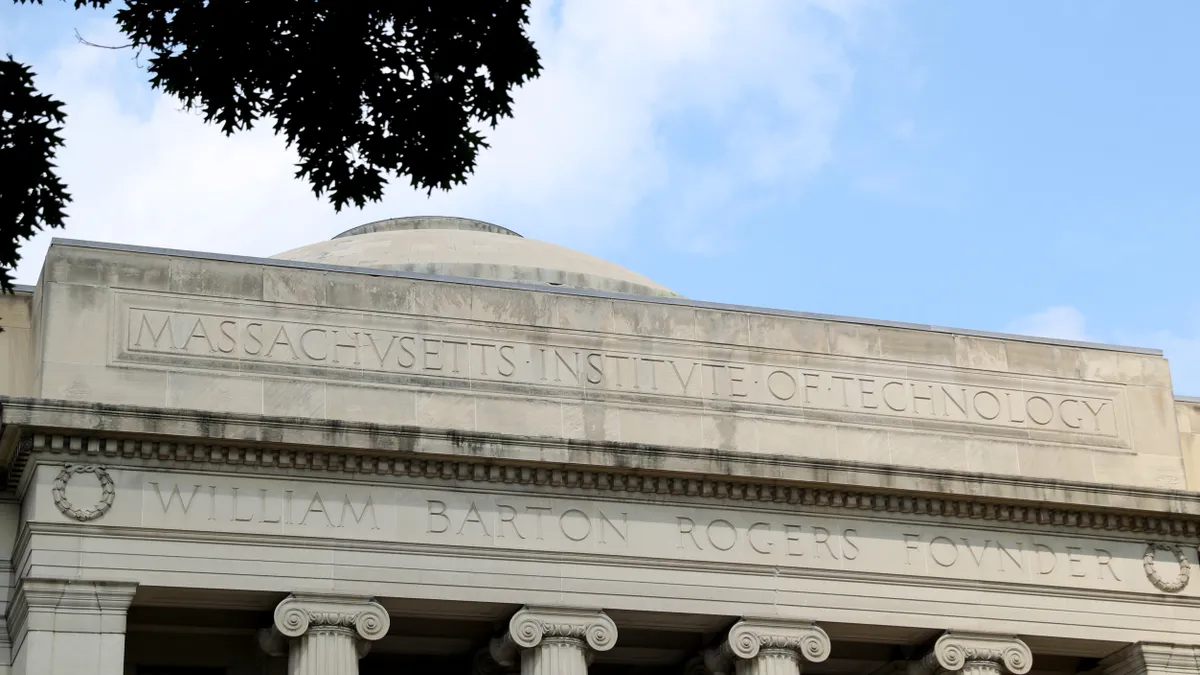Dive Brief:
- Twenty community college students in Massachusetts last month moved into dorm rooms at four-year public universities in the state through a $3 million state-led effort to reduce youth homelessness.
- The pilot program, which includes meals and snacks as well as some campus support services, covers students 25 and younger who are enrolled full-time in a participating public college or university.
- Bridgewater, Framingham and Worcester state universities are paired with Massasoit, MassBay and Quinsigamond community colleges, while the University of Massachusetts Lowell is paired with Middlesex Community College.
Dive Insight:
Community college students tend to have higher levels of basic needs insecurity — such as around housing and food — than do students at four-year universities.
Nearly half (46%) experienced housing insecurity and 12% identified as homeless, according to a 2017 survey by the Wisconsin HOPE Lab of 43,000 students from 66 institutions nationwide, of which 31 were community colleges. That's compared to 36% of four-year university students reporting housing insecurity and 9% who say they were homeless in the last year.
Rates of housing insecurity were higher for community college students who are gay (48%) or bisexual (55%); have nonbinary gender identities (52%); and/or who are Native American (69%), black (55%), mixed/other (52%), Hispanic (51%) or Middle Eastern (49%).
The Massachusetts program aims to give students experiencing homelessness the stability needed to succeed academically, said Massachusetts Education Secretary James Peyser in a statement, which notes there are at least 1,800 young adults in the state who experience homelessness each year.
The program joins several others that seek to improve access to housing for community college students. Tacoma Community College, in Washington state, partners with the local housing authority to offer students federal rental assistance vouchers. The program was motivated by rising housing costs in the Pacific Northwest.
In Michigan, St. Clair County Community College offers a scholarship to help students maintain their financial footing in order to earn their degree, such as with rent, car repair and medical bills.
Growing awareness of housing and food insecurity on campus is prompting administrators and instructors to look for warning signs and be aware of resources available to help students. A lack of faculty training around engaging with students on health and wellbeing issues is also an issue, HOPE Lab founder Sara Goldrick-Rab told Education Dive last year.
Research has tied the inability to fulfill basic needs to poor academic outcomes, the report notes, while finding the use of public services among college students to be uncommon due largely to stigma. A recent report found that more than half (57% or 1.8 million) of students who would likely qualify for SNAP don't participate.
Community college students often have a harder time qualifying for public assistance programs such as SNAP and the Earned Income Tax Credit because of work requirements or exemptions requiring full-time college attendance. And federal aid and companion last-dollar efforts don't usually cover all of their costs, particularly rent, transportation, food and books.
The HOPE report found 57% of two-year college students who received a Pell Grant reported housing insecurity as compared to 45% of four-year students. The rates were similar for food insecurity.
Other restrictions on programs such as those in Massachusetts — that students must be 25 or under and not have families — could limit the extent to which they can help community college students who tend to be older, work at least some of the time and have children.
The Massachusetts program may have unique circumstances that allow the state to pursue it, such as declining enrollment and a shrinking population of college-age students that make it more likely its bevy of four-year institutions will have beds to spare, Goldrick-Rab told The Boston Globe.
The state will reimburse the four-year universities for the costs of dorm bed occupancy for an 18-month period, which includes summer and semester breaks. The Globe reported that the initiative is funded with $120,000 in the current budget and additional support is expected in the next budget.









